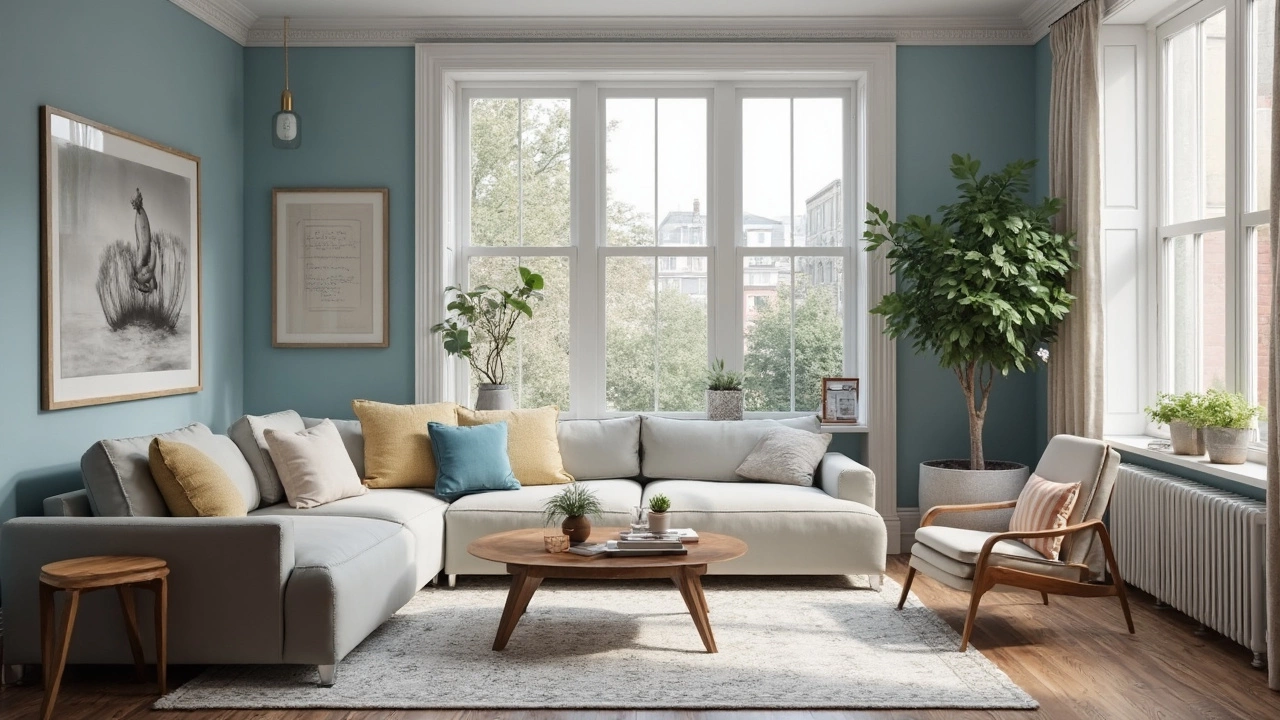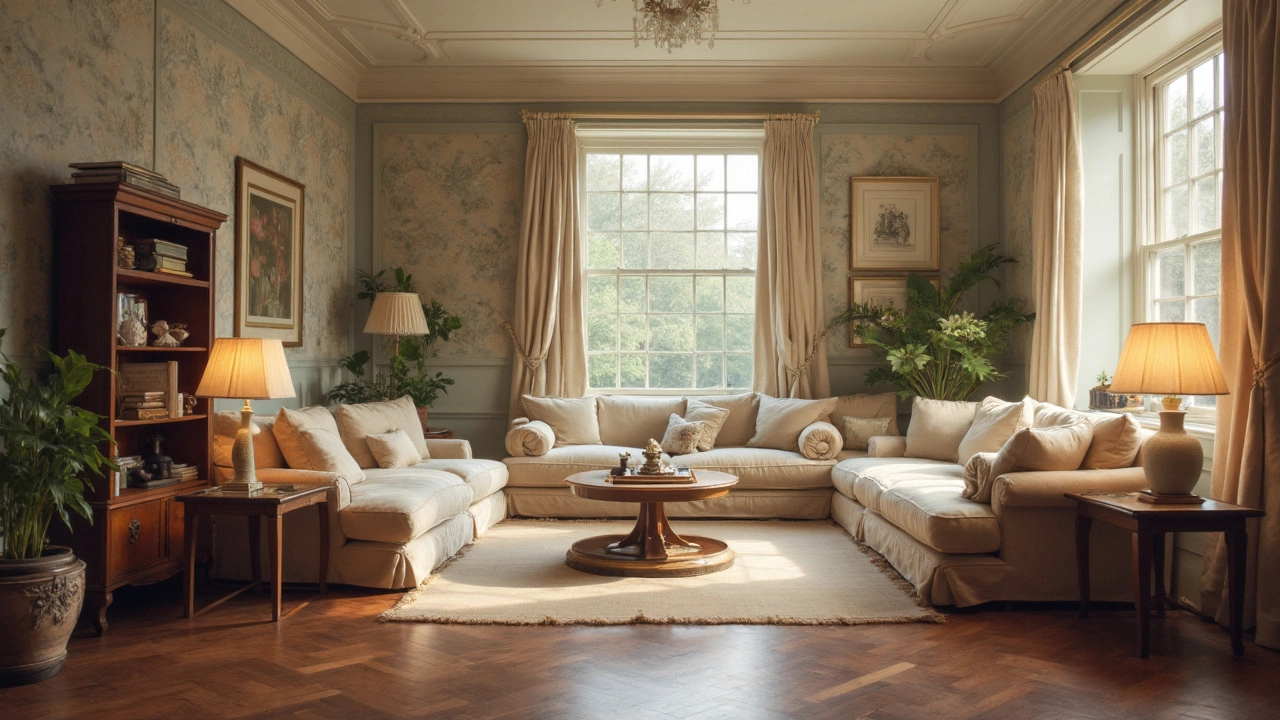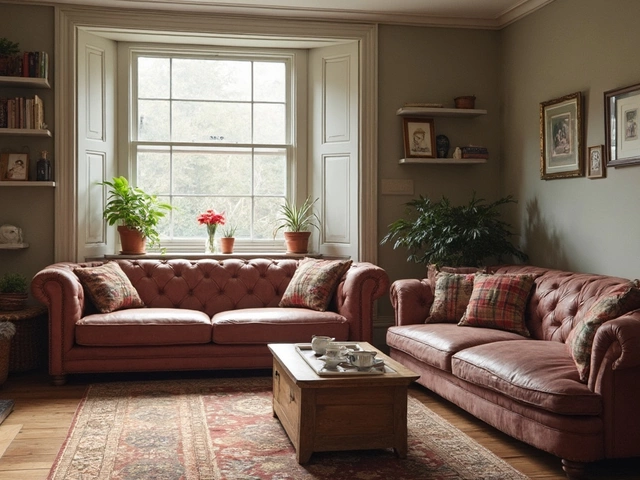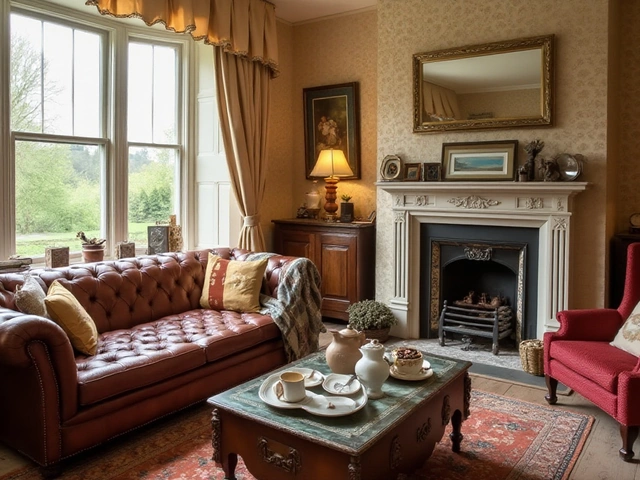 11
Apr,2025
11
Apr,2025
When you're figuring out where to put a corner sofa, it feels like you're solving a puzzle that can make or break your entire living room vibe. So, do you slap that baby against the wall, or let it float in the middle of the room like a free spirit? Both options have their perks, and it's all about what works best with your space and style.
First things first, take a good look around your room. Is it more of a cozy nook or a sprawling area with room to spare? Small spaces can sometimes benefit from having the sofa snugged up against the wall to create extra room to move around. Plus, it could make your room feel larger by opening up more of the space for other activities.
- Understanding Your Space
- Benefits of Wall Placement
- Freestanding Corner Sofas
- Room Flow and Functionality
- Personal Style and Aesthetics
- Tips for Choosing the Right Layout
Understanding Your Space
Before you even start rearranging furniture, get a real sense of your room. Think about its shape and size, because cramming a giant corner sofa into a tiny space can make things feel cramped. If you're dealing with a small living room, you might want to maximize your space by positioning the sofa against a wall. This arrangement can open up more room for walking and other furniture.
Take note of how light flows into the room. Natural light plays a big role in how inviting a room feels. A corner sofa near a window might highlight the natural light, creating a cozy nook for reading or daydreaming. Alternatively, placing the sofa away from direct sunlight can prevent fabric from fading. So, your sofa's relation to windows is something to think about.
Pay attention to your room's focal points, like fireplaces, TVs, or unique architectural features. Your sofa placement should complement these elements, not obscure them. For instance, if your TV is the main event, make sure the sofa faces it without causing a neck strain to anyone watching.
Don't forget the outlets! Seriously, if you're the type who likes to charge your phone or plug in a lamp next to the sofa, ensure there's a power source nearby. A well-placed corner sofa should offer comfort without awkwardly exposing cords or requiring extension leads.
Measure twice, move once. Use painter's tape or a virtual app to visualize how the sofa fits in different spots. This step saves time and heavy lifting by showing you the clear winners and no-go zones in your room setup. Plus, this helps prevent the dreaded scenario of realizing your perfect layout blocks the door or creates an annoying blind spot.
Benefits of Wall Placement
Placing your corner sofa up against the wall is often a go-to move, and for good reasons. Let's dive into why this setup is a winner for many.
First off, it can save a lot of space. If you’ve got a smaller room, every square inch counts. A wall-hugging sofa stops all those annoying bottlenecks when every inch of room matters.
Plus, this setup creates a cozy and intimate area for chilling with friends and family. By bounding the seating area with walls, you can make the space feel inviting and snug - perfect for movie nights or long conversations.
Another perk is that it can make your room look organized. When a corner sofa neatly hugs your walls, it defines the sitting area, making the entire room layout look cleaner and more purposeful.
Maximizing natural flow in your room is also easier. You don’t have to serpentine around random furniture in the middle of the room, which is a nice bonus, especially if your room sees a lot of traffic.
Finally, if you're a fan of maximizing seating, a wall placement might allow you to fit a larger sofa since your sofa isn't floating in space, demanding walk-around space at the back. Check out this layout possibility:
| Sofa Placement | Ideal Room Size (sq ft) | Seating Capacity |
|---|---|---|
| Against Wall | 150–250 | 5–6 |
| Freestanding | 200+ | 4–5 |
So if you're all about making your living room functional without sacrificing style, pushing that sofa up against the wall could be just the move you need.
Freestanding Corner Sofas
So, you're thinking about letting your corner sofa have some breathing room? A freestanding corner sofa can really shake things up in your living space. When a couch isn't pressed up against a wall, it opens up a world of fun opportunities for you to play with layout and flow.
Imagine being able to section off areas without needing to build a wall. Your corner sofa can act like a gentle divider, marking off the living area from other parts of a room, like a dining space or a study nook. This way, each area feels distinct yet connected, all thanks to a smart piece of furniture.
Another cool thing about a freestanding arrangement is flexibility. You can easily shuffle things around to freshen up the room's vibe whenever the mood strikes. Trust me, sometimes just pivoting that sofa a bit can change the whole atmosphere.
On the practical side, a freestanding corner sofa lets you do tricks with lighting and airflow you might not otherwise manage. You don't block windows or vents, so you can maximize natural light and keep the room feeling airy. And who doesn't love a cozy, sun-drenched corner to curl up in?
And let’s not forget about functionality. Need a hide-and-seek spot for a party or a cozy reading corner when there’s no company? Having a freestanding corner sofa means you can create different vibes without needing a total room makeover.
In a nutshell, going for a freestanding setup can give your living area a dynamic edge while letting your creativity run wild. So why not let that sofa float freely and see where it takes you?

Room Flow and Functionality
Getting the room flow right can seriously change how you feel when you walk into that space. It’s like the difference between winding through a maze and a relaxing stroll in the park. So, what’s all the fuss about with room flow and corner sofas? Your sofa placement can guide how people move and interact in your living area.
When a corner sofa is against the wall, it naturally directs the room's traffic and reduces the congestion that can happen in smaller spaces. This setup often works best if you’ve got multiple people using the room at once. Freestanding sofas can break up open spaces into cozy sections, but they might also become a speed bump in a busy household.
Interior designer Sarah Lonsdale once mentioned,
“The goal is to create a space that not only meets practical needs but also delivers a harmonious flow that feels just right for your lifestyle.”With this in mind, think about how you usually navigate the room. Do you need clear paths for kids running around or for party guests wandering?
A smooth flow isn’t just about people walking either; it’s about sightlines too. A sofa against the wall keeps things sightly and helps draw the eye to focal points like a fireplace or a great piece of art hanging across the room.
Consider creating an up-to-date traffic plan for your living room. Yes, it sounds a bit traffic-engineer-y, but it works! Picture regular paths you take: from the kitchen to the living room, from the couch to the TV, or just strolling from one end to the other. The aim is to keep these routes straightforward without bumping into furniture every time you grab a snack.
Personal Style and Aesthetics
Your home is your canvas, and how you arrange your corner sofa can reflect who you are. If you're all about sleek, modern vibes, having your sofa in the middle of the room might be your jam. This setup can create a laid-back space that feels inviting and connected, perfect for mixing with trendy coffee tables or edgy artworks.
On the flip side, if you're into a more classic or traditional look, pushing that corner sofa against the wall might suit you better. It can create a cozy backdrop for a gallery wall or a floor lamp with character. Think about your color scheme too. Go for neutral sofa tones if you want the flexibility to change accessories around, or pick bold colors that pop if you're making a statement.
Now, don't forget about those cozy, family-oriented folks out there. If your living room is less about style and more about function, say for big family gatherings or movie nights, consider how your sofa placement influences the social vibe. A wall placement opens up floor space, a boon if you need room for kids to play or for extra seating during parties.
Mixing textures and fabrics around your sofa can also lift your style game. Throw in a chunky knit blanket or a soft area rug. These elements add layers to your space, making it feel full of life. Choose aesthetics that resonate with your lifestyle, and the sofa will tie it all together, becoming the piece that feels like home.
Tips for Choosing the Right Layout
Nailing the perfect spot for your corner sofa is not just about slapping it against a wall or plopping it down in the middle. It’s all about thinking how it fits with your lifestyle and room vibe. Here’s a handy guide to help you make the most out of your space.
Consider Your Room's Shape and Size: The first step is checking out the room's size and shape. Is it long and narrow or short and wide? A corner sofa placed against the wall can open up more floor space in a smaller room. For larger spaces, try using the sofa as a room divider to separate different areas, like a cozy reading nook from a TV-watching zone.
Think About Traffic Flow: You don’t want your sofa to block paths or create awkward walks around it. Make sure there’s plenty of room to stroll easily from one part of the room to another. It’s annoying when you’re dodging furniture just to grab the remote, right?
Light and Windows Matter: Natural light can make a room feel airy and bright, so when possible, position your sofa to take advantage of it. Just remember, direct sunlight can fade fabric over time, so a little angle adjustment might be necessary.
Style and Function: Your personal style really steps in here. Love a formal look? Wall placement might give you the structured feel you’re after. Want something more laid-back? Let that sofa float. Don’t be afraid to play around until it feels right. Remember, you’re the one living in it!
Test Different Angles: Sometimes, it’s just about trying different arrangements to see what feels best. If possible, get some friends to help and physically move the sofa around—it can surprise you how different angles can change the whole room.
Take these tips and put them to use without fear—because creating a room that feels just right is all about what works for you.




